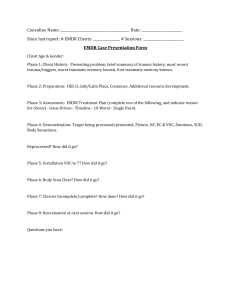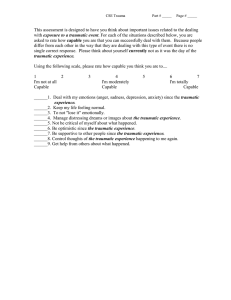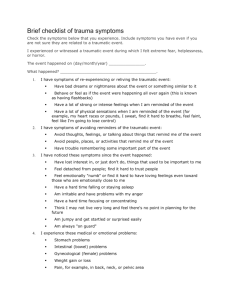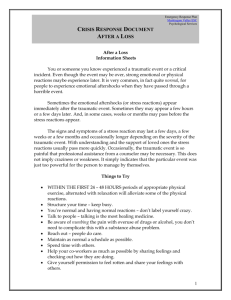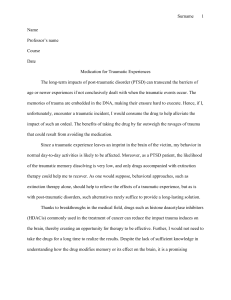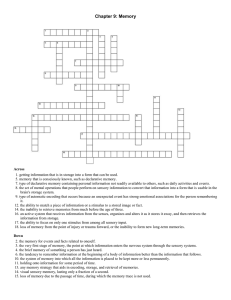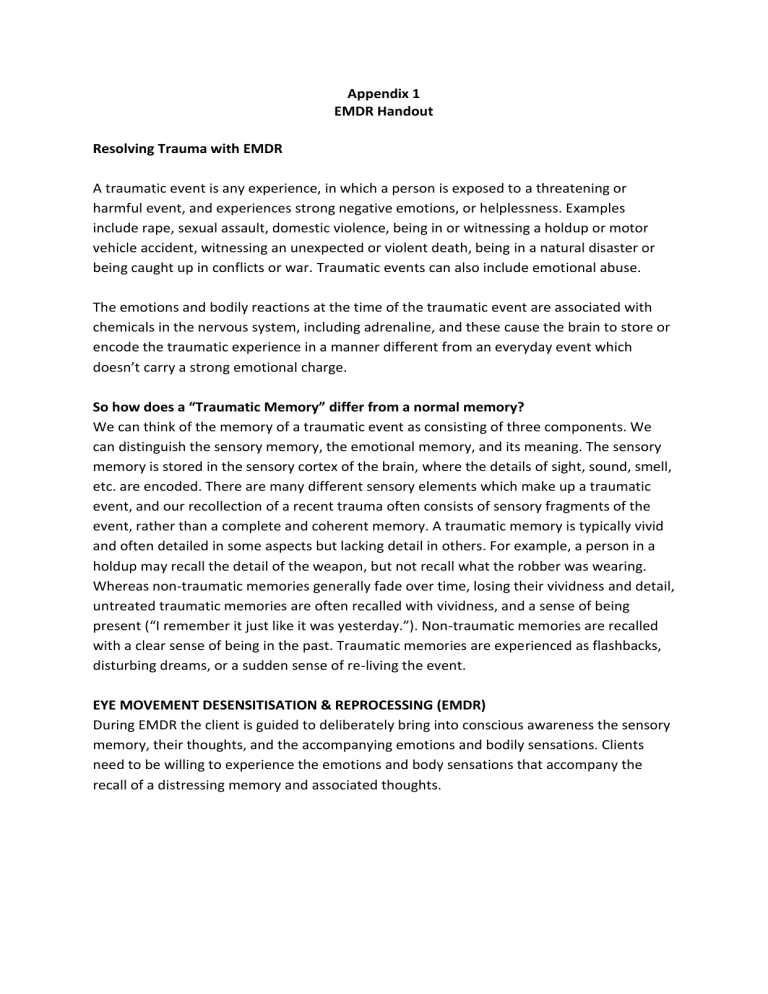
Appendix 1 EMDR Handout Resolving Trauma with EMDR A traumatic event is any experience, in which a person is exposed to a threatening or harmful event, and experiences strong negative emotions, or helplessness. Examples include rape, sexual assault, domestic violence, being in or witnessing a holdup or motor vehicle accident, witnessing an unexpected or violent death, being in a natural disaster or being caught up in conflicts or war. Traumatic events can also include emotional abuse. The emotions and bodily reactions at the time of the traumatic event are associated with chemicals in the nervous system, including adrenaline, and these cause the brain to store or encode the traumatic experience in a manner different from an everyday event which doesn’t carry a strong emotional charge. So how does a “Traumatic Memory” differ from a normal memory? We can think of the memory of a traumatic event as consisting of three components. We can distinguish the sensory memory, the emotional memory, and its meaning. The sensory memory is stored in the sensory cortex of the brain, where the details of sight, sound, smell, etc. are encoded. There are many different sensory elements which make up a traumatic event, and our recollection of a recent trauma often consists of sensory fragments of the event, rather than a complete and coherent memory. A traumatic memory is typically vivid and often detailed in some aspects but lacking detail in others. For example, a person in a holdup may recall the detail of the weapon, but not recall what the robber was wearing. Whereas non-traumatic memories generally fade over time, losing their vividness and detail, untreated traumatic memories are often recalled with vividness, and a sense of being present (“I remember it just like it was yesterday.”). Non-traumatic memories are recalled with a clear sense of being in the past. Traumatic memories are experienced as flashbacks, disturbing dreams, or a sudden sense of re-living the event. EYE MOVEMENT DESENSITISATION & REPROCESSING (EMDR) During EMDR the client is guided to deliberately bring into conscious awareness the sensory memory, their thoughts, and the accompanying emotions and bodily sensations. Clients need to be willing to experience the emotions and body sensations that accompany the recall of a distressing memory and associated thoughts. This is quickly followed by the client following the moving fingers of the therapist. The client’s eyes move rapidly for a brief period, around 30 seconds. This produces a distinctive pattern of electrical activity in the brain, which appears to result in a change to the trauma memory. The exact mechanisms in the brain which cause the memory to change has not yet been discovered, but the regions of the brain involved with sensory storage, emotional activation and reasoning all become more active, with changed patterns of nerve cell firing. During the eye movement the therapist rarely talks or offer suggestions. The client does not try to change any aspect of the memory, and is asked to just notice the experience, to observe their memory, emotions, bodily sensations and thoughts. At the end of each set of eye movements the client is then asked to report their present experience. It may be that the sensory memory becomes less detailed or less vivid, and clients often report that the memory has become quite distant. Commonly the emotional or bodily sensations reduce in intensity quite quickly. If other associations are observed, they are shared with the therapist. Simple traumas can be treated in a single session. Older and multiple traumas can require several sessions. © 2014 Graham Taylor, Clinical Psychologist.
